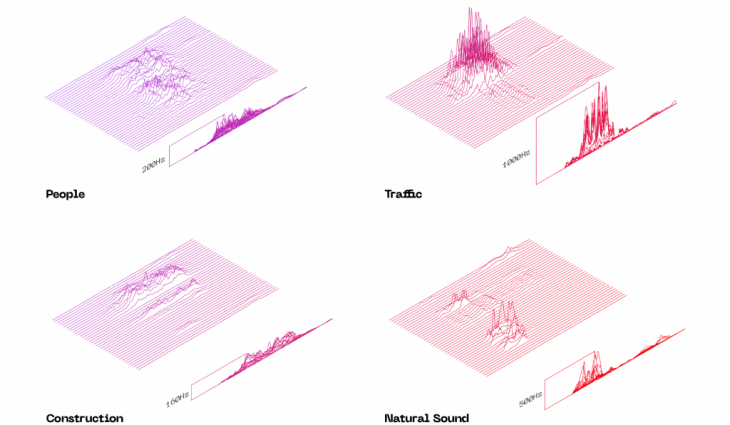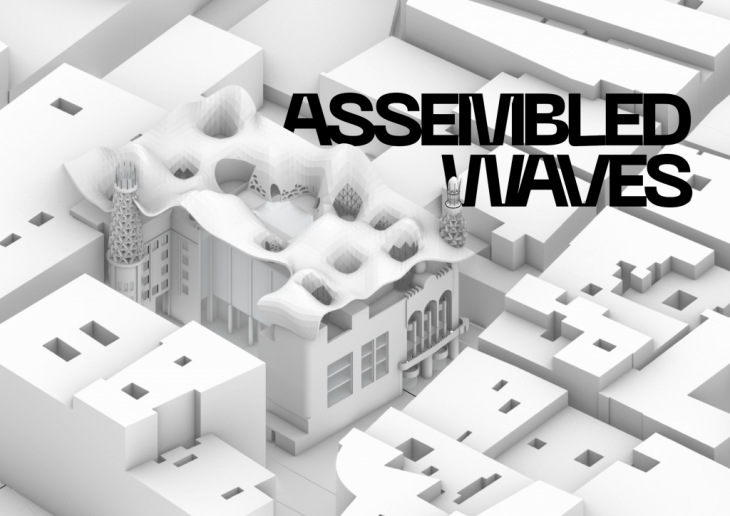
Isometric View of the Architectural Intervention within the Context
Abstract
This project aims to transform the Palau de la Musica, located in central Barcelona, into a noise collecting and emitting device that creates healthy internal acoustical environments and projects healthy sound into the neighborhood to attract displaced fauna and returns this urban environment to a therapeutic natural state.
It addresses the large impact of noise pollution and the spillover effects on the surrounding flora and fauna. Through a multi-faceted sound manipulation, this system creates a new atmosphere where human and natural sounds are intertwined, where therapeutic sounds are propagated, which collectively enlarge the acoustic comfort zone to the neighborhood.
1. Site Study – Palau de la Musica Catalana
BUILDING BACKGROUND
Palau de la Música Catalana
Maps, location, history of building
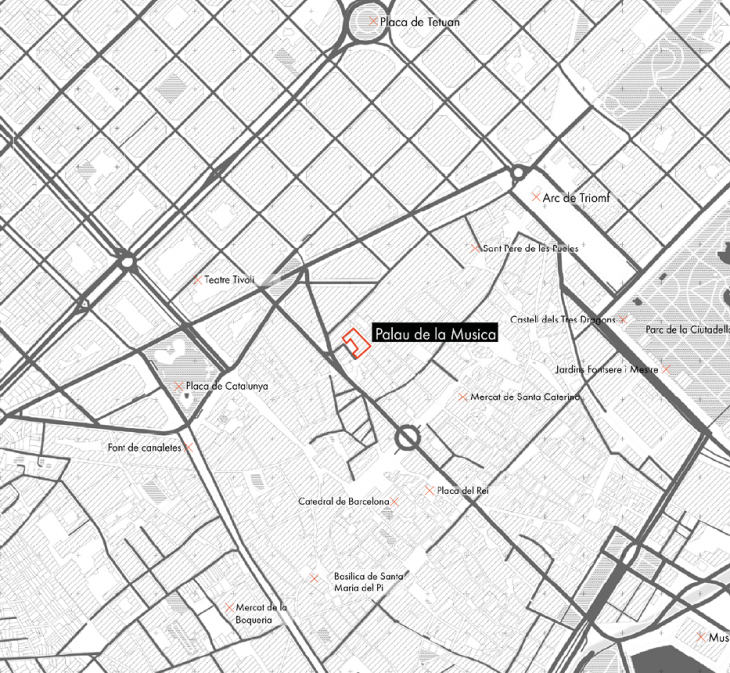
Palau de la Música Catalana – Site Map
Built between 1905 and 1908, and designed by LLuís Domenech, for the Catalan Choir, this concert hall was meant to promote Catalan culture. Located near the boundary between the organic urban fabric of the Old Quarter, and Cerdà’s regular urban grid, the building also happens to sit next to one of the few traffic arteries that pass through the neighborhood.
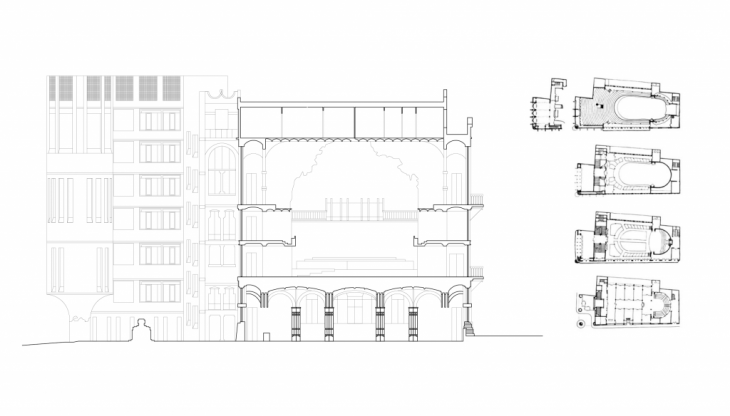
Palau de la Música Catalana – Redrawn plans and sections
The Palau underwent several remodeling, both attempted to bring Domenech’s vision to life of creating a concert hall filled with light. The remodeling also included building an extension – Petit Palau – which houses a smaller auditorium in addition to the original one.
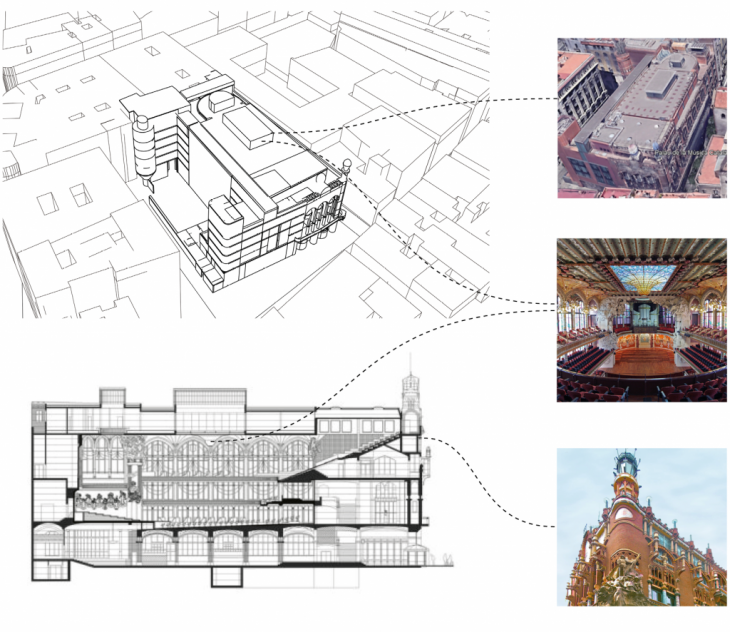
Palau de la Música Catalana – building characteristics
Img.1:The building’s roof is currently inactive, with no designed access for the public. However, it houses several box-like rooms that serve as a light diffuser to light up the elaborate stained glass work in the concert hall. These currently provide a diffused light and create a transparent and light atmosphere in the concert hall.
Img.2: The ceiling of the concert hall has a large stained glass window to let light in. This window sits under several layers of glass boxes.
Img.3: The facade of the building is heavily ornamented. With statues and mosaics, and a corner piece by Miquel Blay, called the Catalan Song.
2. Phenomenon – Sound
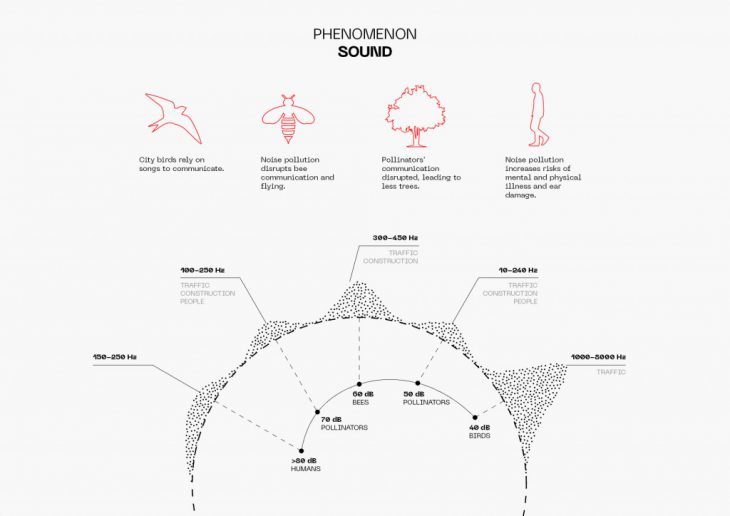
Sound Phenomenon – Noise Disruption Animation
Pitch/Frequency (Hz)
Sound can be understood as frequency, which is the measurement of how many times a second the particle will vibrate. A change in frequency means a pitch change. Thus every sound-maker who has a distinct call or noise will have a distinct frequency. In the diagram above we identified the sound frequency of prevalent sources in an urban environment.
Loudness/Sound Pressure (dB)
Sound can also be understood by its intensity or volume. It describes the maximum pressure produced as particles are squeezed together when made to vibrate. The height (or amplitude) of the peak of a wave tells us the volume.
In the chart above, we identified the average volume of prevalent sounds. Our question is: which of these sounds are desirable? Which are missing?
Agents
-Birds
City birds rely on singing to communicate, survive, and mate. Loud noise above 60dB means they have to compete to be heard. Traffic noise at 80dB and above displaces the birds population completely.
-Bees & pollinators
Noise pollution disrupts the bees’ communication and insects’ orientation. Which means fewer agents for pollination.
-Flora
Disrupted pollinator communication leads to less propagation of plants. This has dire consequences on air quality in traffic-heavy zones, as well as reducing the noise barrier and thereby exacerbates noise pollution.
-Humans
In humans, sustained exposure to noise of over 80dB can cause permanent hearing damage. Moreover, the intensity of daily noise may lead to several mental and neurological ailments. And yet, it is mainly human activity that causes such noise pollution and displacement of flora and fauna.
Understanding Noise Pollution in Barcelona
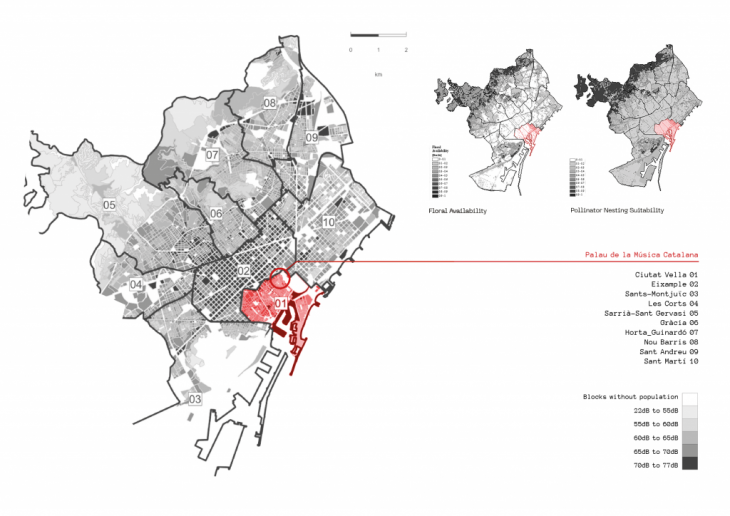
Noise Pollution in Barcelona – Mapping
During our research on the conditions of noise in Barcelona, we checked how sound may have been impacted/ or has impacted other phenomena. One of the findings was that the map for floral availability, as well as pollinators inversely correlates with the data for noise levels. Beyond mere correlation, further research showed that sound plays an important part in pollinators’ navigation, without whom plants have a less chance of propagating, and thereby fewer agents to buffer city noise.
? Street sound map
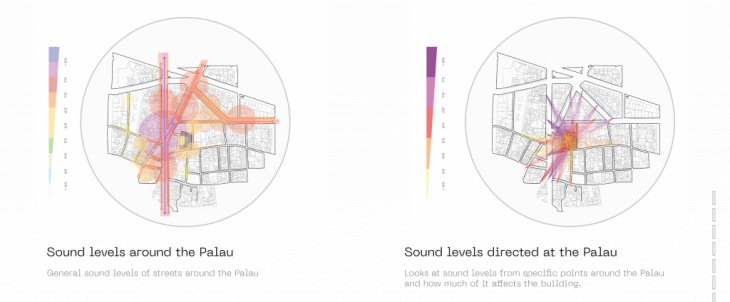
Street Sound Mapping in Relation to the Building
? Sound analysis simulation
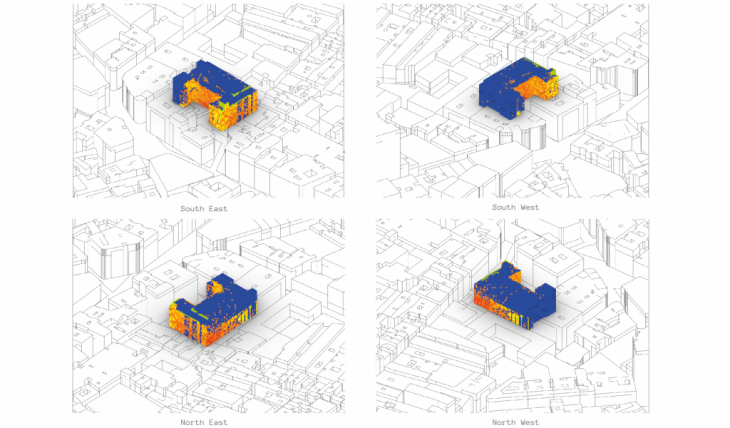
Noise Levels Impacting the Building – Simulation – Noting how sound sources mainly affect building facade at street level. Helped determine where the roof should draw its noise inputs from, shows how roof’s quieter space can eb good to create calmer soundscapes.
? Cross-referencing site data
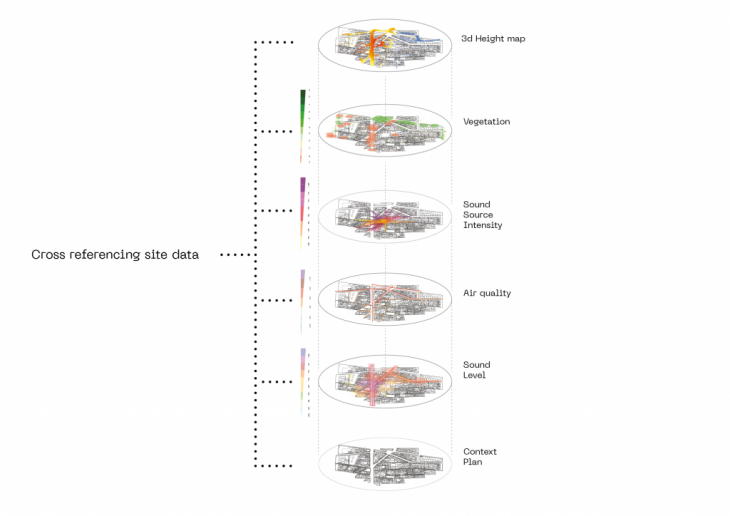
Map Data Accumulation – 3D Sound Mapping Layers
3. Ambition/goal
– Desirable and undesirable sound by frequency and intensity
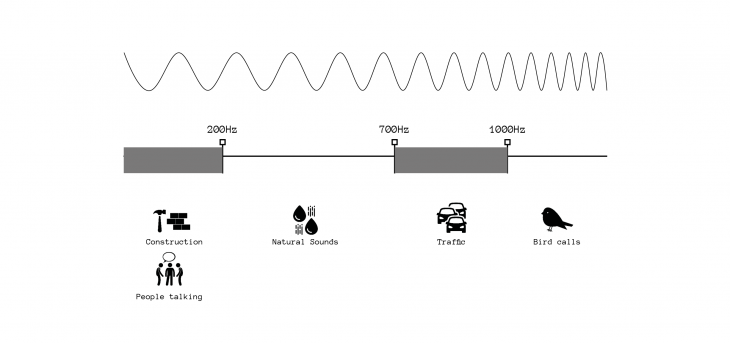
Desirable and undesirable sound – Filtering by frequency
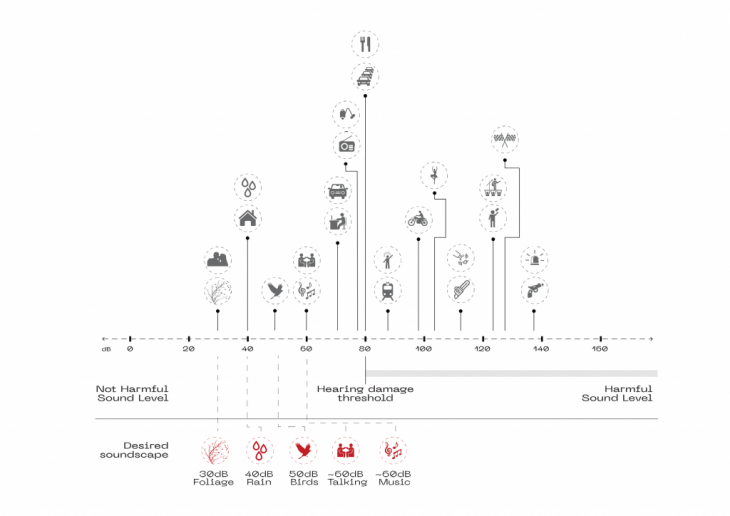
Defining Elements of a Therapeutic Sound Atmosphere – Desirable Sound by Intensity
Sound simulation of People, Traffic, Construction, and NatureThis simulation of sound frequency extraction shows the reaction of the loudness levels to four common sound sources as they range from 200 Hz to 1000 Hz.
? Testing materials for sound filtering (prototype v1)
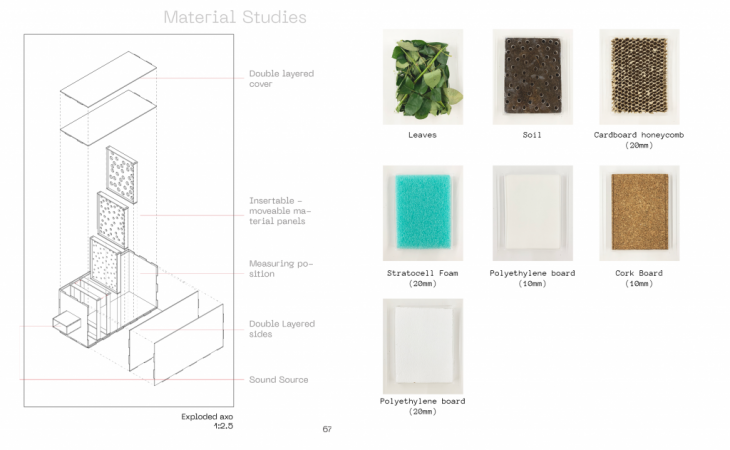
Prototype v1
In the next stage of distilling the proposal, we investigated the sound absorption qualities of different materials to propose where they can be applied in the proposal and how.
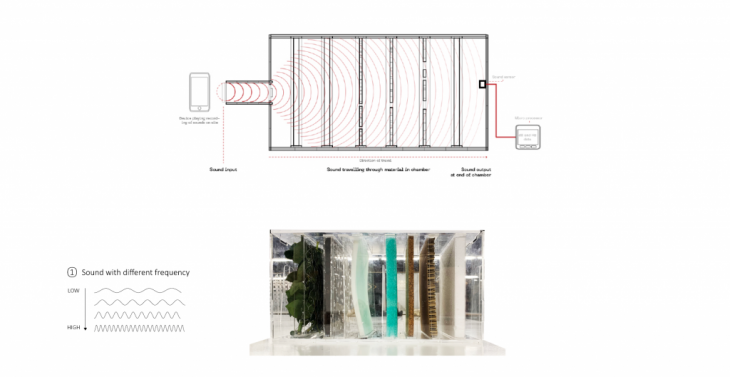
Prototype v1 – Testing Process
The material was selected based on its base material (wood, plastic, organic, composite), and on its geometry, thickness, and porosity.
For the test, we ran each material through a series of frequencies and measured the outcoming sound level to see how the material performed. >> Aside from the following quantitative data we discovered, we found that , in general, porous materials were highly efficient at dampening high-frequency noise.
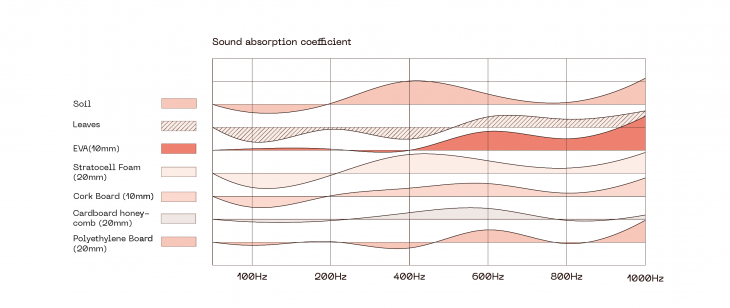
Graph of the Data Collected from the Prototype Testing
– Proposal
? Concept of the microclimate: birds, greens, water together with natural sound
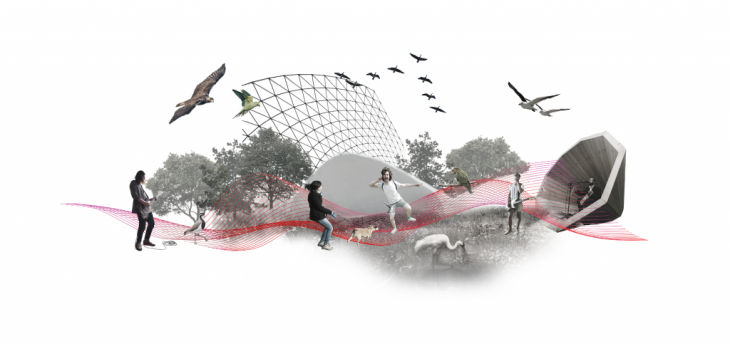
Visualization of the Microclimate Ambition and Desired Atmosphere
? Metabolic diagram
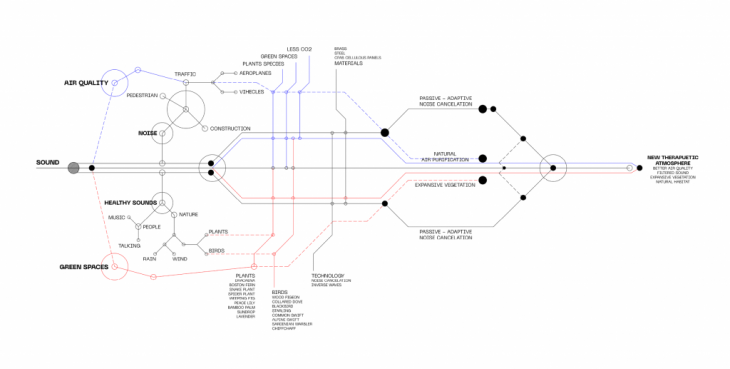
Metabolic Pathway Diagram
? Sankey diagram
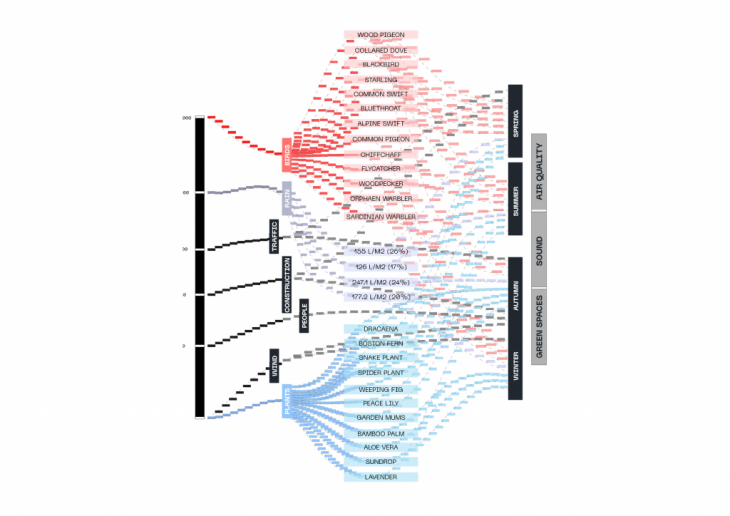
Sankey Diagram
4. Proposal/building
-Building form
? geometry generation

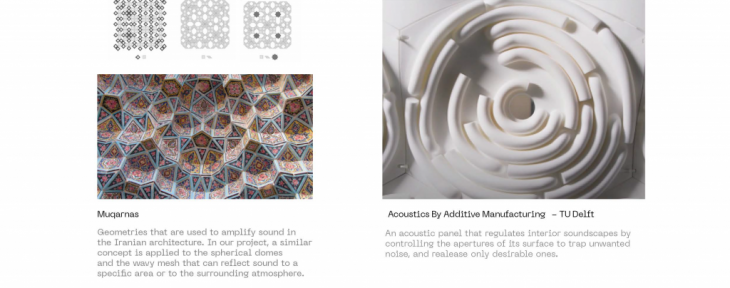
Precedents
Intervention – Proposal
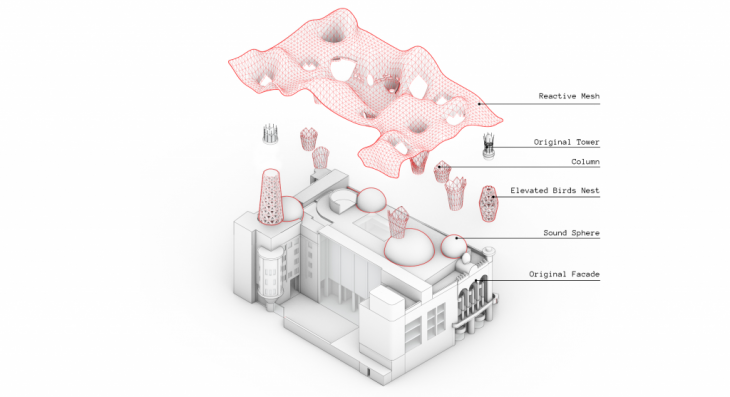
Elements of the Architectural Intervention
? jellyfish section

Jellyfish Section
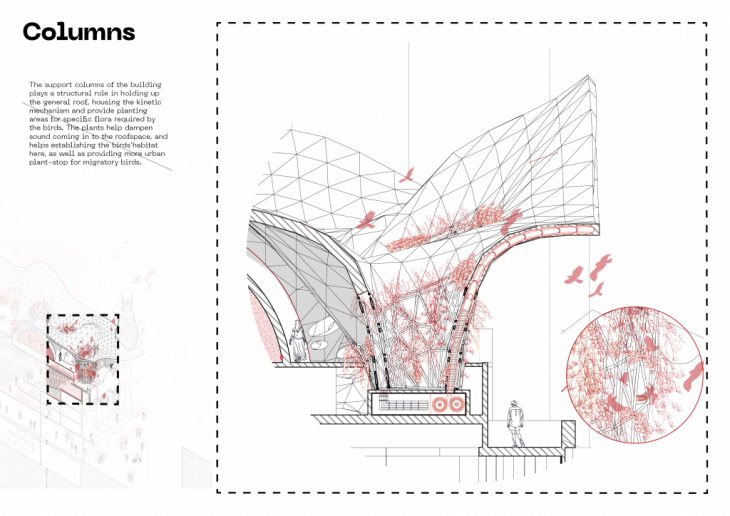
Design Element – Columns
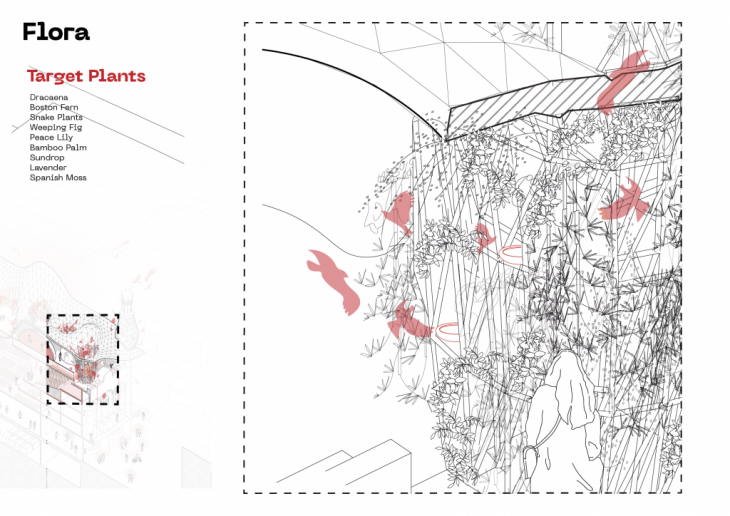
Design Element – Target Plants
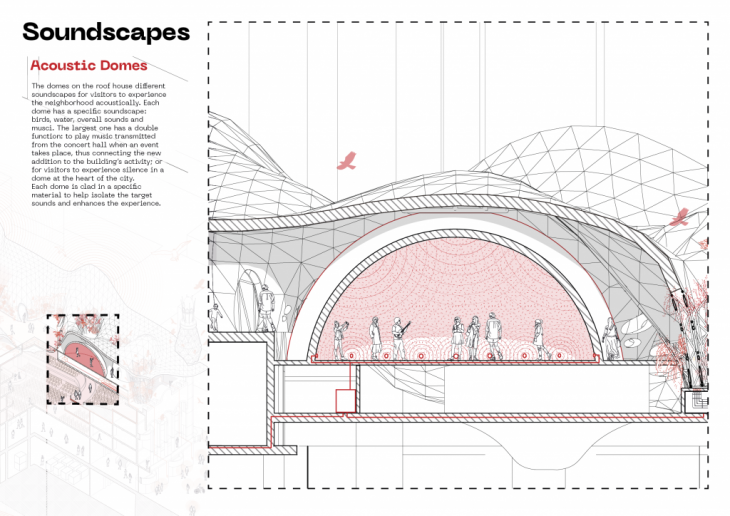
Design Element – Acoustic Domes
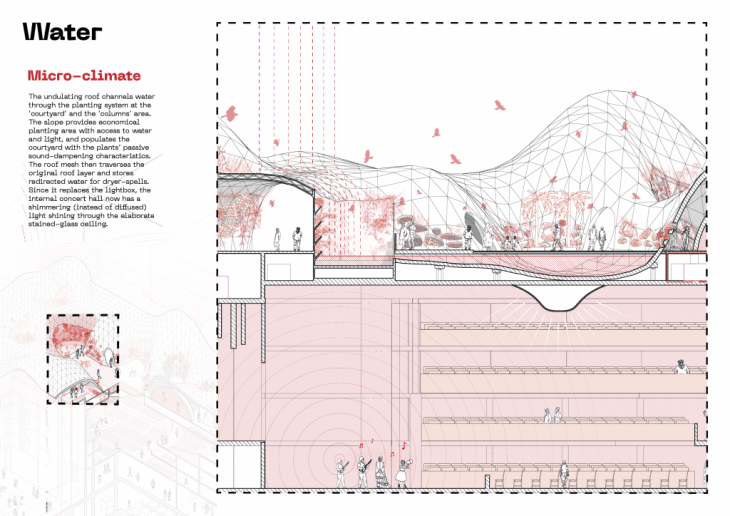
Design Element – Water Reservoirs
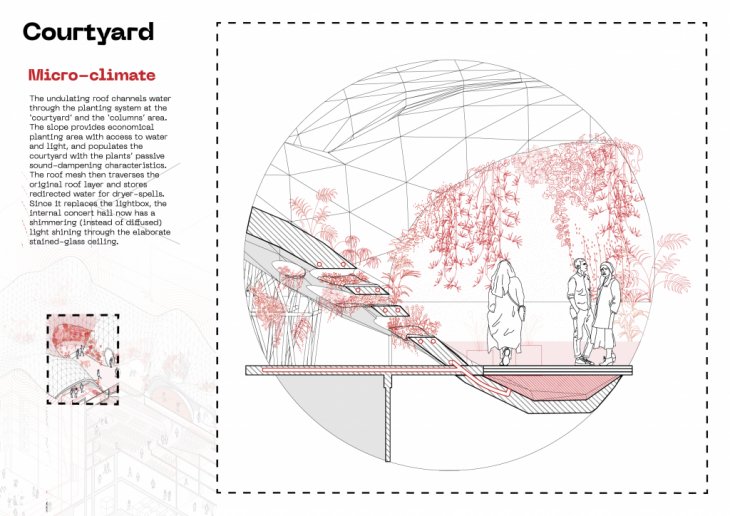
Design Element – Courtyard
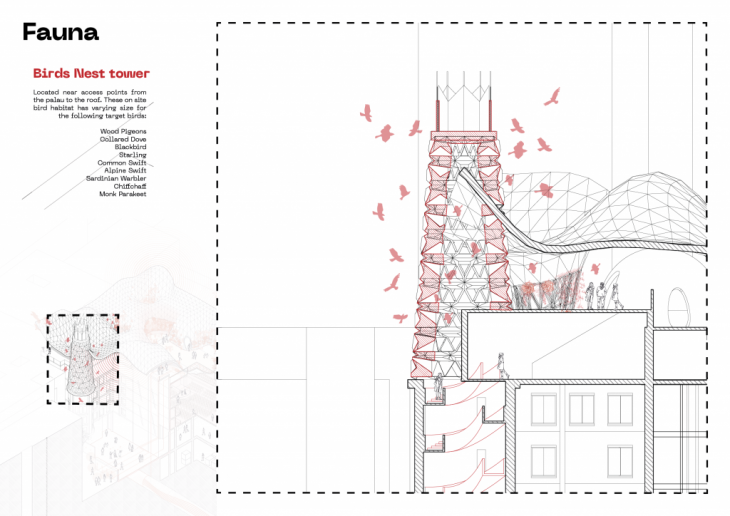
Design Element – Birds’ Nest
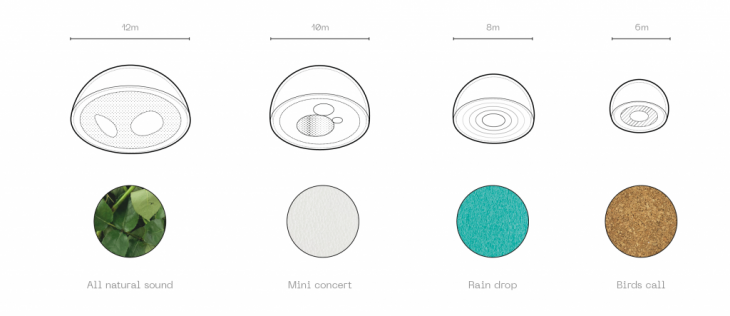
Types of Acoustic Domes
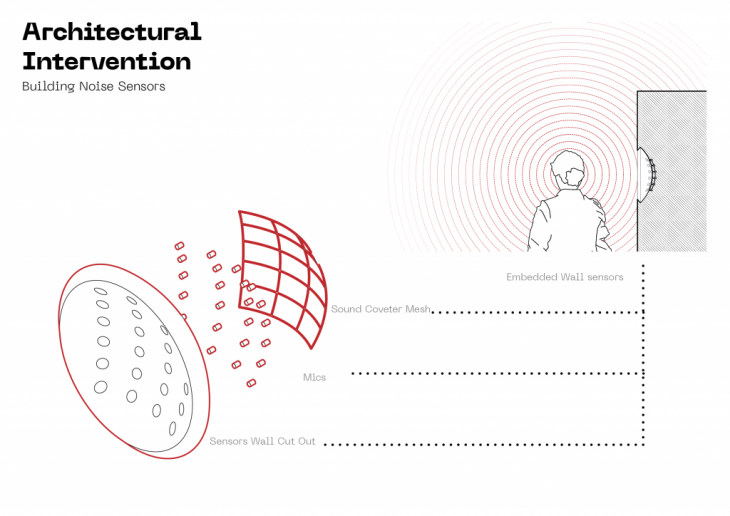
Composition of the Sound Sensors
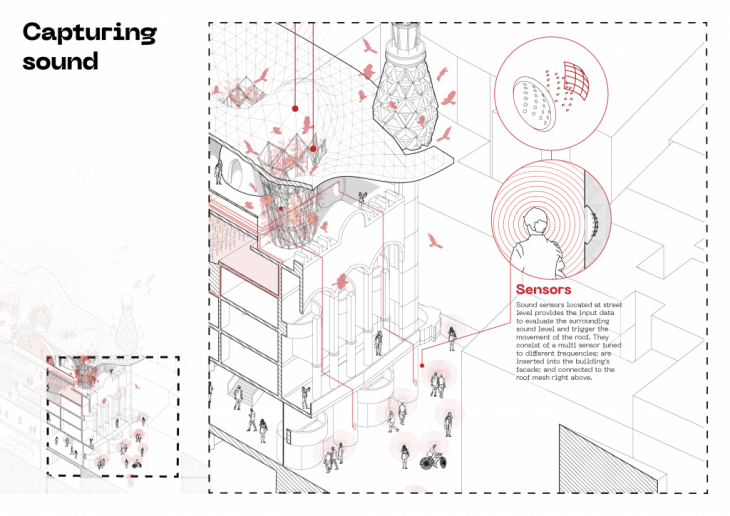
Sound Sensors Performance
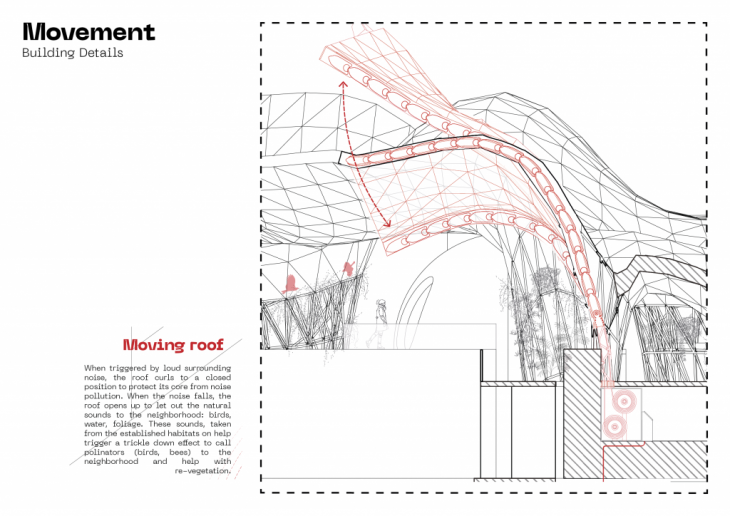
Dynamics of the roof Motion
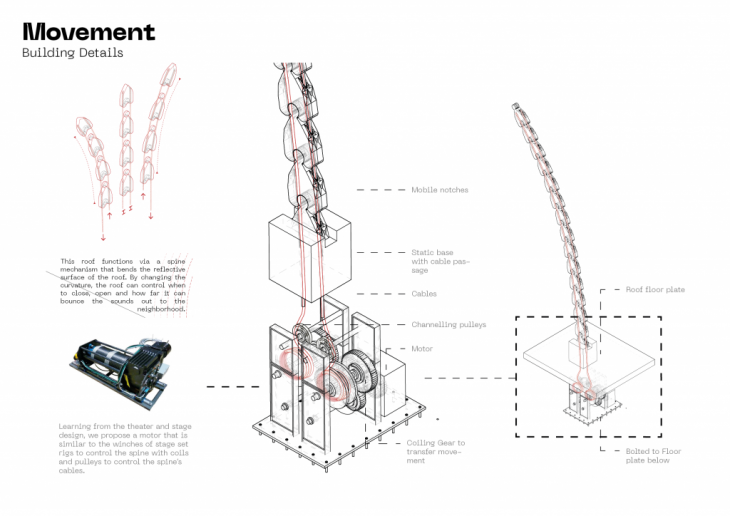
Design Details of the Movement Joints and Connections
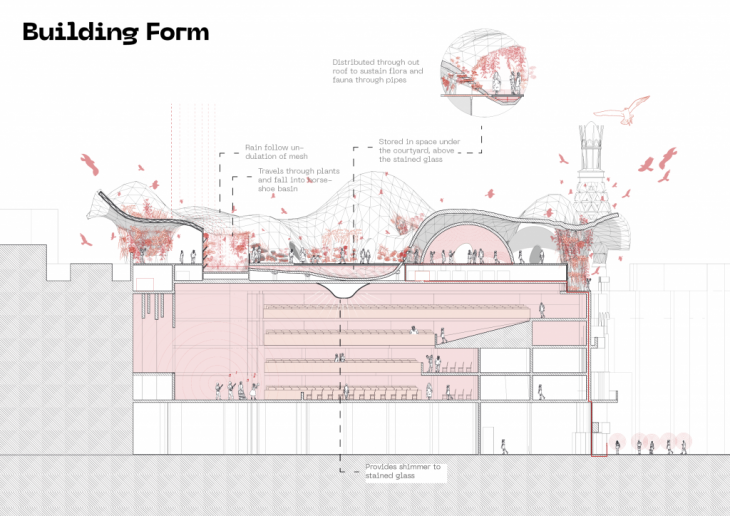
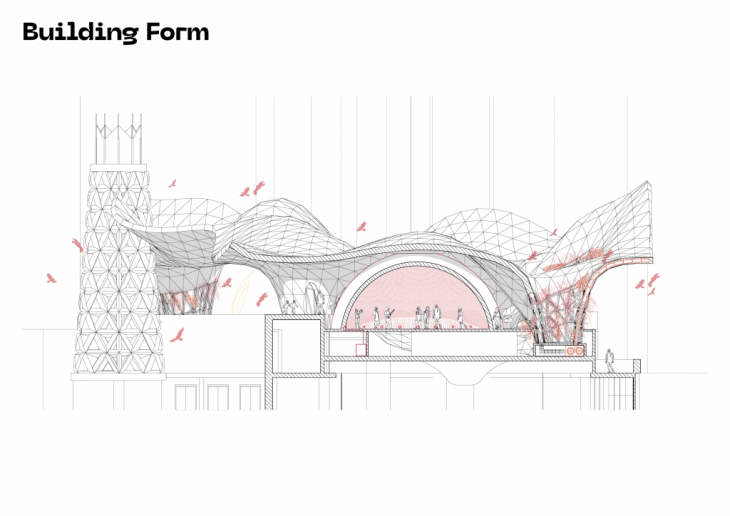
Building Form in Section
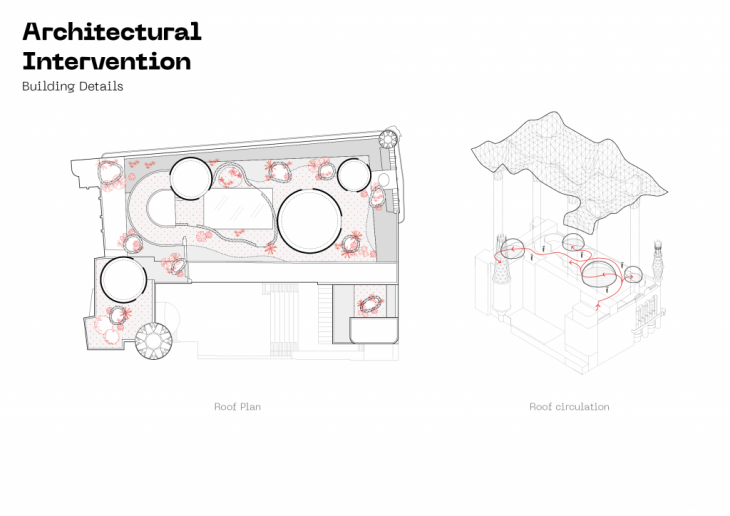
Roof Plan and Circulation Diagram
Spatial Organization of the Intervention
01. Courtyard – Microclimate
02. Spheres – Soundscapes
03. Columns – Habitat
04. Birds’ nest Towers
05. Water collector
 Types of Acoustic Domes
Types of Acoustic Domes
-Prototype v2
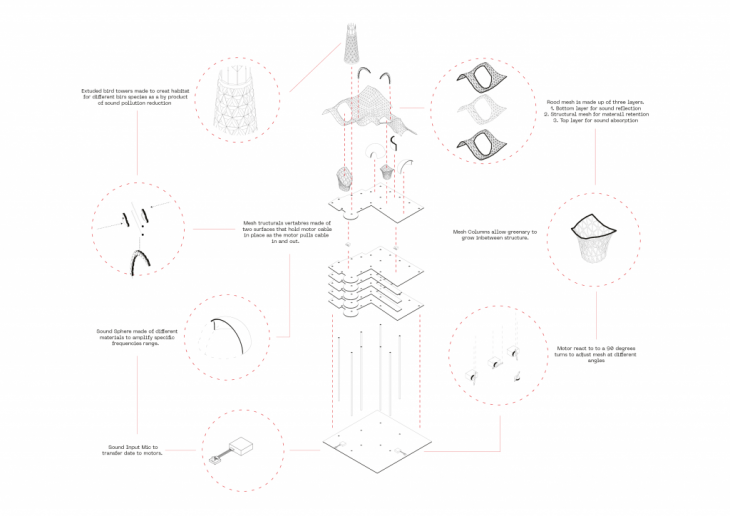
Prototype v2
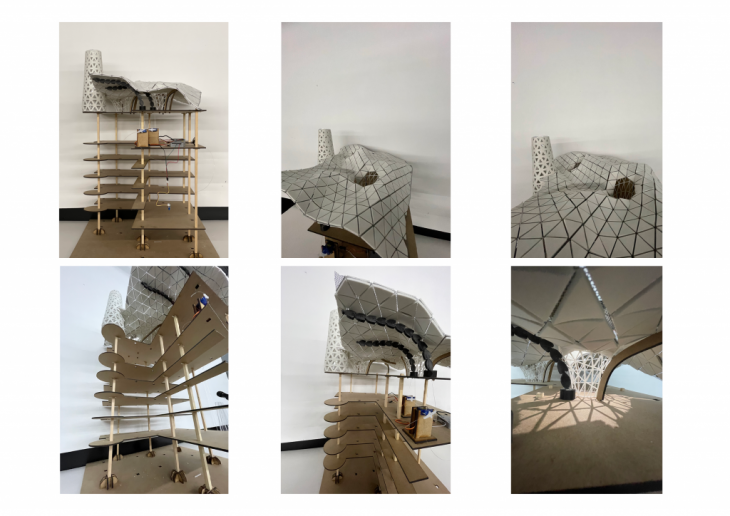
Photos of Prototype v2
Visualizations
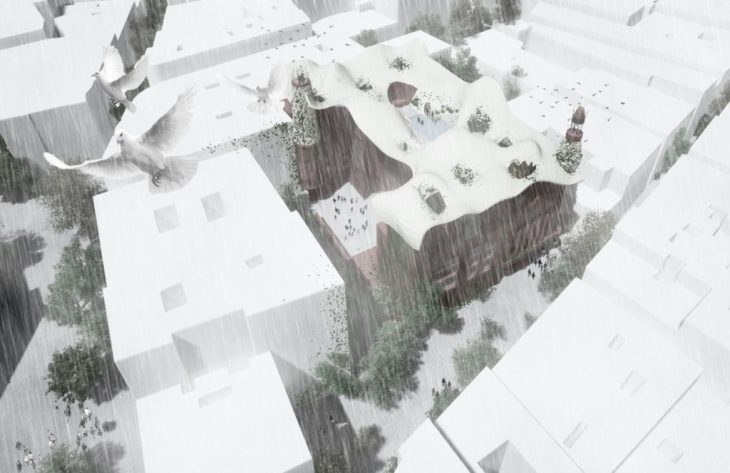
2050 Vision for the new Palau
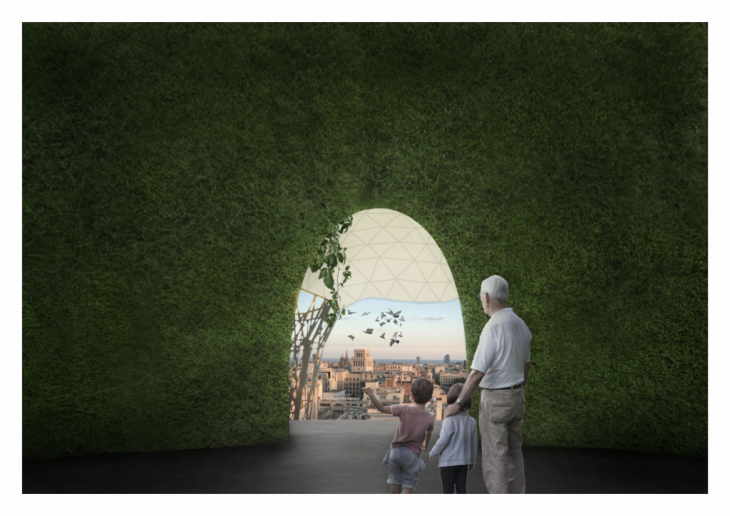
Visualization – Inside the Acoustic Dome
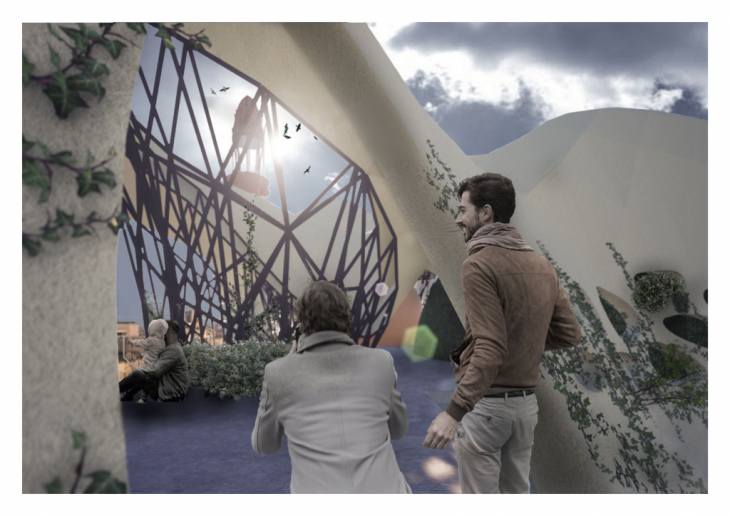
Visualization – Circulation and Atmosphere
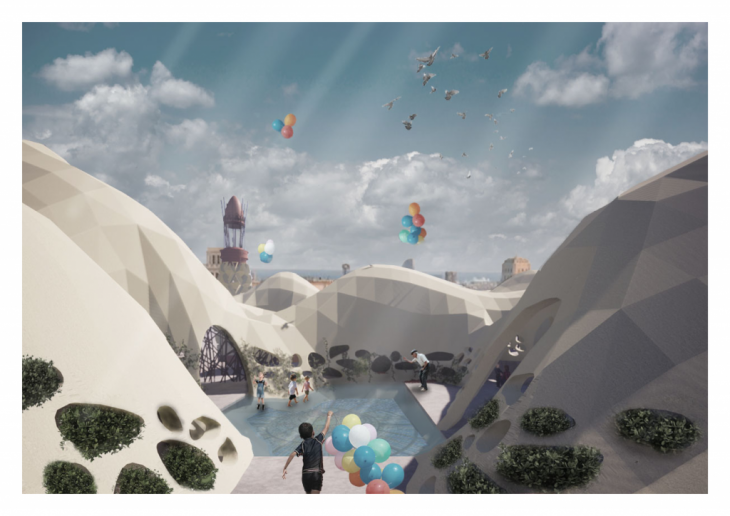
Visualization – Courtyard and Water Collection
Design Animation Video
Project credits
Assembled Waves // Palau de la Música Catalana is a project of IAAC, Institute for Advanced Architecture of Catalonia developed in the Master of Advanced Architecture 2020/21 by Students: Ziyad Wassef Abdelkader Youssef Ahmed, Cecile Ngoc Suong Perdu, J. Levy Rodriguez, Nan Yin, and Faculty: Oriol Carrasco and Javier Pena.
